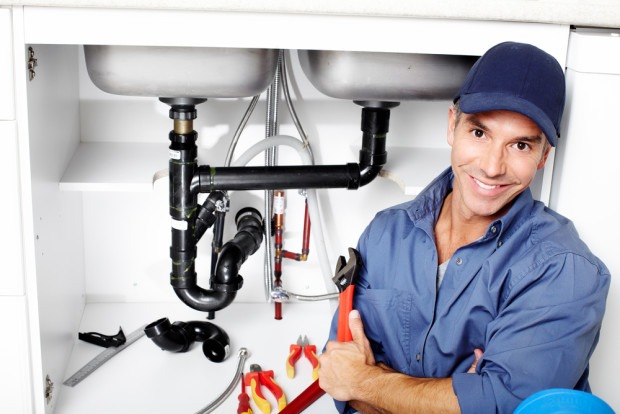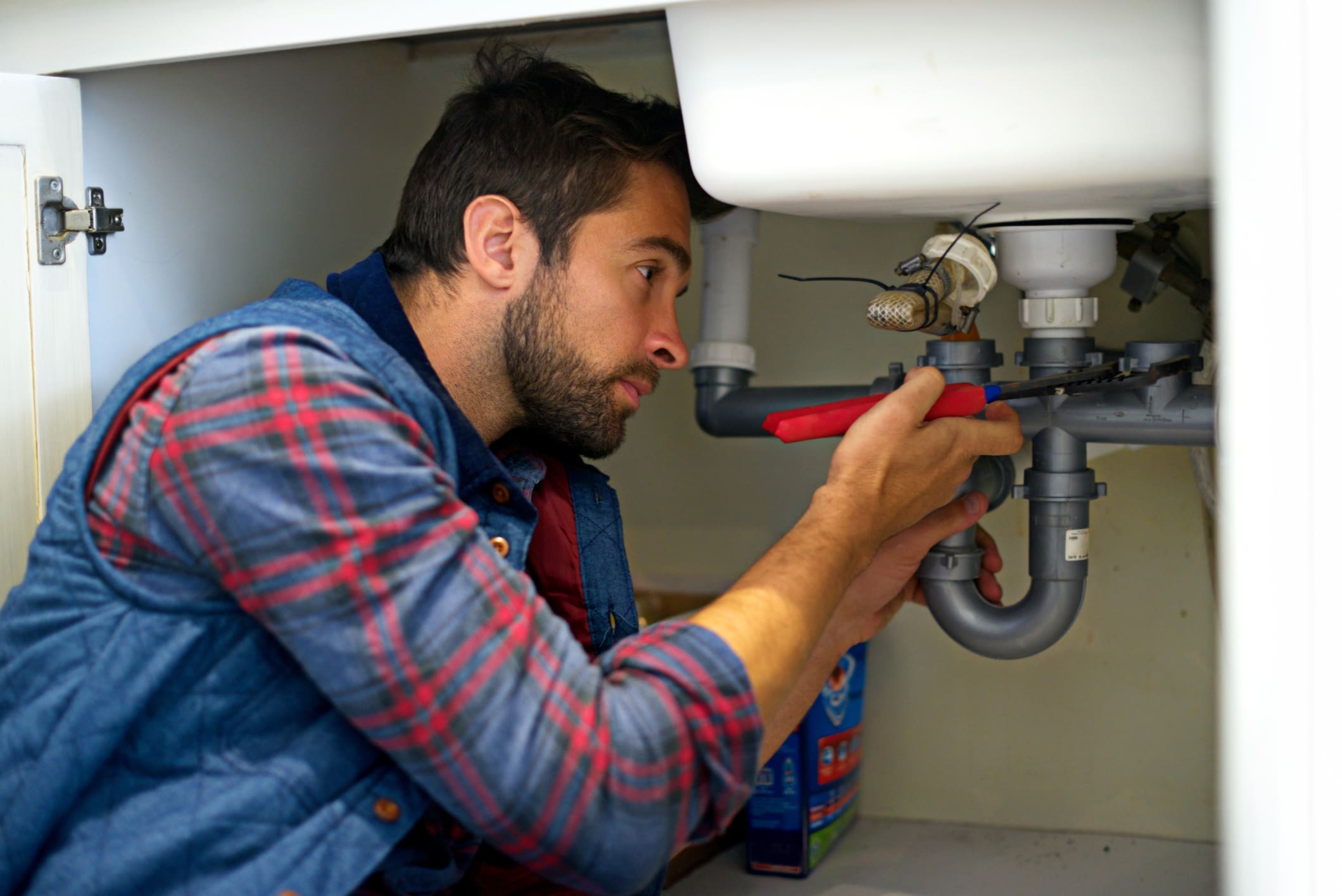The Complete Plumbing Maintenance Guide for First-Time Homeowners
The Complete Plumbing Maintenance Guide for First-Time Homeowners
Blog Article
Usual Pipes Issues Every Home Owner Need To Know
House owners frequently come across a variety of plumbing issues that can disrupt everyday life. Usual issues consist of leaking taps, clogged up drains, and running toilets. These problems generally originate from damaged parts or particles accumulation. In addition, low water pressure and burst pipelines can signal deeper problems. Understanding these challenges is essential for reliable upkeep. There are other less evident issues that can develop, which require closer examination.
Leaking Taps
Dripping faucets can be a frustrating nuisance for homeowners. These relentless leaks not just produce an annoying audio but additionally result in lost water and raised utility expenses. A leaky tap often results from worn-out washers, O-rings, or seals, which wear away with time because of normal use and direct exposure to water. Sometimes, the faucet's interior parts may be corroded or damaged, requiring a more extensive fixing or replacement. Recognizing the resource of the leakage is crucial; homeowners may require to dismantle the tap to analyze its components carefully. Routine upkeep can aid stop leakages, consisting of cleansing aerators and looking for indicators of wear. Attending to a leaking faucet immediately can conserve water and minimize prices, making it a manageable yet important task for homeowners to deal with in preserving their plumbing systems efficiently. Appropriate focus to this typical concern can lead to a more comfy living atmosphere.
Clogged Drains
Lots of homeowners experience the aggravation of clogged drains pipes at some factor. This usual pipes issue can arise from various reasons, including the buildup of hair, soap residue, food fragments, and oil. These products can create blockages that impede the flow of water, bring about slow down water drainage or full stoppage.In kitchens, oil and food scraps are frequently the culprits, while shower rooms regularly suffer from hair and soap build-up. Routine upkeep, such as utilizing drainpipe strainers and preventing pouring fats down the sink, can assist prevent clogs.When a blockage does happen, homeowners may try to make use of a plunger or an industrial drainpipe cleaner as first solutions. Nonetheless, relentless issues may need specialist assistance to stay clear of damages to pipes - Plumbing. Understanding the causes and avoidance approaches for clogged drains pipes can conserve home owners time and money, ensuring a smoother plumbing experience

Running Commodes
Running bathrooms are a common problem that can stem from various causes, including malfunctioning flappers and chain problems. The constant running not only wastes water but also leads to increased energy expenses. Dealing with these concerns promptly can prevent further complications and recover performance to the plumbing system.
Root Causes Of Running Commodes
A consistent flow of water from a toilet can be both wasteful and aggravating, commonly signifying underlying issues within the plumbing system. One common cause is a used flapper valve, which may not produce an appropriate seal, enabling water to constantly leak into the dish. In addition, a malfunctioning fill shutoff can lead to too much water flow, adding to the trouble. Misaligned float mechanisms may additionally trigger the commode to run as they fail to control the water level appropriately. An additional possible issue is mineral accumulation, which can block components and hinder their capability. Identifying these reasons quickly can assist property owners resolve the issue before it escalates, making certain reliable operation of their pipes system.
Repercussions of Constant Running
Commonly overlooked, the consequences of a continuously running bathroom can substantially affect both water usage and house expenses. A running bathroom can waste a standard of 200 gallons of water daily, causing enhanced water expenses and unneeded source consumption. This excessive water use not only strains the home spending plan however also contributes to ecological worries, particularly in locations facing water shortages. Furthermore, the constant audio of running water can be a source of nuisance, interfering with the serenity of the home - Plumbers Near Me. Prolonged problems might lead to even more significant plumbing troubles if left unaddressed, resulting in further monetary burdens. Home owners must acknowledge the importance of prompt repair work to alleviate these adverse effects and preserve an effective pipes system
Taking Care Of Running Bathroom Issues
Bathrooms that continuously run can be an aggravating issue for house owners, but identifying the cause is the very first step towards an effective solution. Usual reasons consist of a damaged flapper, which may not create a proper seal, allowing water to leave into the dish. Property owners ought to evaluate the flapper for wear and replace it if needed. In addition, the fill shutoff can be malfunctioning, creating excess water to flow continually. Replacing this part or changing may settle the problem. One more possible culprit is a misaligned float, which can be gotten used to the proper height. Routine maintenance and prompt repairs can avoid running bathrooms, guaranteeing both water preservation and cost savings on energy expenses.
Low Tide Stress
Low water stress can be an aggravating experience visit this website for house owners, often showing up as a weak stream from taps and showerheads. This problem can originate from numerous reasons, consisting of sediment accumulation in pipes, corroded plumbing, or problems with the metropolitan water. House owners might initially discover reduced water pressure in particular locations of the home, but it can intensify to a much more extensive trouble if not addressed promptly.In some instances, malfunctioning stress regulatory authorities can also be accountable for insufficient water flow. Normal maintenance, such as purging the water heating system and looking for clogs, can aid mitigate these issues. It might be necessary to speak with an expert plumbing technician to detect and resolve the underlying cause if low water stress lingers. Determining the source of low tide stress is necessary for recovering proper water flow and ensuring a functional plumbing system.
Ruptured Water lines
Ruptured pipes can be a major plumbing concern, typically resulting from the very same aspects that add to low tide pressure, such as temperature variations and maturing framework. When water ices up within pipes, it broadens, raising stress until the pipe can no much longer have it, bring about a rupture. In addition, deterioration from long term direct exposure to water can weaken pipelines, making them vulnerable to rupturing under typical pressure.Homeowners might discover indicators of a ruptured pipe through abrupt water leaks, damp places on ceilings or walls, and an unforeseen increase in their water bill. Immediate action is crucial; falling short to resolve a ruptured pipeline can result in considerable water damage, mold and mildew development, and expensive repairs. Routine assessments and maintenance of plumbing systems can assist stop this concern. Protecting pipes in colder areas and replacing old piping can considerably minimize the risk of ruptured pipelines, protecting the home's pipes honesty.
Water Heating System Issues
Exactly how can home owners recognize hot water heater concerns before they rise? Routine evaluation and upkeep can aid spot prospective problems early. House owners should search for indications such as irregular water temperature level, unusual noises, or a decrease in warm water supply. Leakages or pools around the device may show a malfunction that needs instant interest. The appearance of rust or sediment accumulation can additionally signal the need for maintenance.Additionally, property owners should check the age of their water heating system; most units have a life expectancy of 8 to 12 years. It may be time to show on substitute if the heater is approaching this age and revealing indicators of wear. Routine flushing of the container can protect against sediment build-up, extending the system's life. By remaining watchful and resolving issues promptly, property owners can prevent pricey fixings and guarantee their hot water heater runs effectively go to this site for many years to find.
Sewer Line Issues
Several house owners may encounter drain line troubles at some time, impacting their plumbing system's total capability. Usual issues consist of clogs, tree origin intrusions, and pipeline damages. Blockages commonly arise from the buildup of grease, hair, and foreign items that block the flow of wastewater. Tree roots can infiltrate drain lines, creating cracks and leakages. In addition, aging pipelines might corrode or break, resulting in more problems (Plumber Mississauga). Indicators of sewer line difficulty consist of sluggish drains, undesirable smells, and sewer back-ups, which can present health and wellness dangers. Homeowners ought to deal with these troubles without delay to prevent comprehensive damage and expensive fixings. Routine upkeep, such as set up evaluations and cleaning, can assist protect against considerable concerns. In serious instances, expert treatment might be essential to fix or change damaged areas of the drain line. Knowing these prospective problems can aid home owners take aggressive procedures to maintain their pipes systems effectively
Regularly Asked Concerns
Just How Can I Stop Pipes Issues in My Home?
To protect against plumbing troubles, normal upkeep is crucial. Homeowners must examine pipelines for leaks, clean drains, and monitor water stress. Additionally, educating themselves regarding appropriate usage can substantially lower the threat of future pipes issues.
When Should I Call a Plumber As Opposed To Repairing It Myself?
Determining when to call a plumbing professional usually depends on the extent of the issue. Significant leakages, relentless obstructions, or strange troubles warrant professional aid, making certain security and protecting against additional damages instead of risking individual efforts at repair service.
What Are the Signs of Hidden Pipes Leaks?
Indicators of concealed plumbing leaks consist of unusual water bills, moist spots on ceilings or wall surfaces, mold development, and a moldy odor. These signs commonly recommend underlying concerns that call for professional analysis and fixing for resolution.
Exactly how Usually Should I Have My Pipes Examined?
Routine plumbing assessments are suggested every one to two years. This frequency assists determine prospective issues early, making sure the system continues to be effective and lowering the danger of pricey repair work or unforeseen emergencies in the future.
Are There Do It Yourself Solutions for Minor Pipes Issues?

Report this page